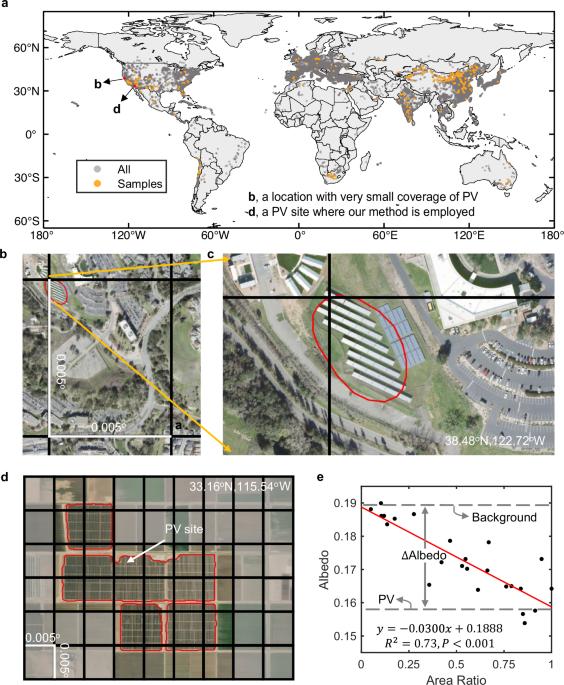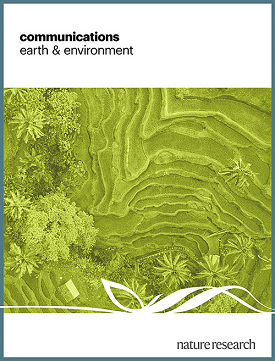全球太阳能电池板扩张导致地表反照率小幅下降
IF 8.1
1区 地球科学
Q1 ENVIRONMENTAL SCIENCES
引用次数: 0
摘要
为去碳化而部署光伏板可能会降低当地的陆地反照率,引发正辐射强迫,从而抵消碳减排所带来的预期负辐射强迫。然而,由于对光伏基地的观测有限,这种潜在的不利影响仍不确定。在此,我们根据全球卫星数据,采用稳健的线性参数化方法来量化光伏引起的反照率变化。我们发现,总体反照率下降了-1.28 (-1.80, -0.90) × 10-2(中位数和四分位数间距),这与土地覆盖类型和气候制度有关。然而,反照率降低的程度明显低于地球系统模型模拟太阳耕作气候反馈时的简单假定值。此外,在大多数光伏农场中,反照率引起的正辐射强迫可在一年内被清洁太阳能发电产生的负辐射强迫抵消。我们的研究结果强调了光伏发电在减缓全球变暖方面的潜力,并强调需要更精确的模型估算。根据一项利用 352 个地点的卫星图像进行的分析,安装太阳能电池板导致的地表反照率下降因土地覆盖类型和气候制度而异,但在大多数地点,这种下降并不会超过去碳化带来的好处。本文章由计算机程序翻译,如有差异,请以英文原文为准。


Small reduction in land surface albedo due to solar panel expansion worldwide
Photovoltaic (PV) panel deployment for decarbonization may reduce local terrestrial albedo, triggering a positive radiative forcing that counteracts the desired negative radiative forcing from carbon emission reductions. Yet, this potential adverse impact remains uncertain due to limited observations at PV sites. Herein we employ a robust linear parameterization method to quantify PV-induced albedo changes based on satellite data globally. We find an overall albedo decrease of −1.28 (−1.80, −0.90) × 10−2 (median and interquartile range), specific for land-cover types and climate regimes. However, the extent of albedo reduction is markedly lower than simplistic assumed values in simulating climate feedback for solar farming in Earth system models. Moreover, the albedo-induced positive radiative forcing can be offset by negative radiative forcing from clean solar generation in most PV farms within one year. Our findings underscore PV’s potential in mitigating global warming and stress the need for more accurate model estimations. The land surface albedo reduction due to solar panel installation varies across land-cover types and climate regimes, but in most locations the decrease does not outweigh the benefits of decarbonization, according to an analysis using satellite images of 352 sites.
求助全文
通过发布文献求助,成功后即可免费获取论文全文。
去求助
来源期刊

Communications Earth & Environment
Earth and Planetary Sciences-General Earth and Planetary Sciences
CiteScore
8.60
自引率
2.50%
发文量
269
审稿时长
26 weeks
期刊介绍:
Communications Earth & Environment is an open access journal from Nature Portfolio publishing high-quality research, reviews and commentary in all areas of the Earth, environmental and planetary sciences. Research papers published by the journal represent significant advances that bring new insight to a specialized area in Earth science, planetary science or environmental science.
Communications Earth & Environment has a 2-year impact factor of 7.9 (2022 Journal Citation Reports®). Articles published in the journal in 2022 were downloaded 1,412,858 times. Median time from submission to the first editorial decision is 8 days.
 求助内容:
求助内容: 应助结果提醒方式:
应助结果提醒方式:


